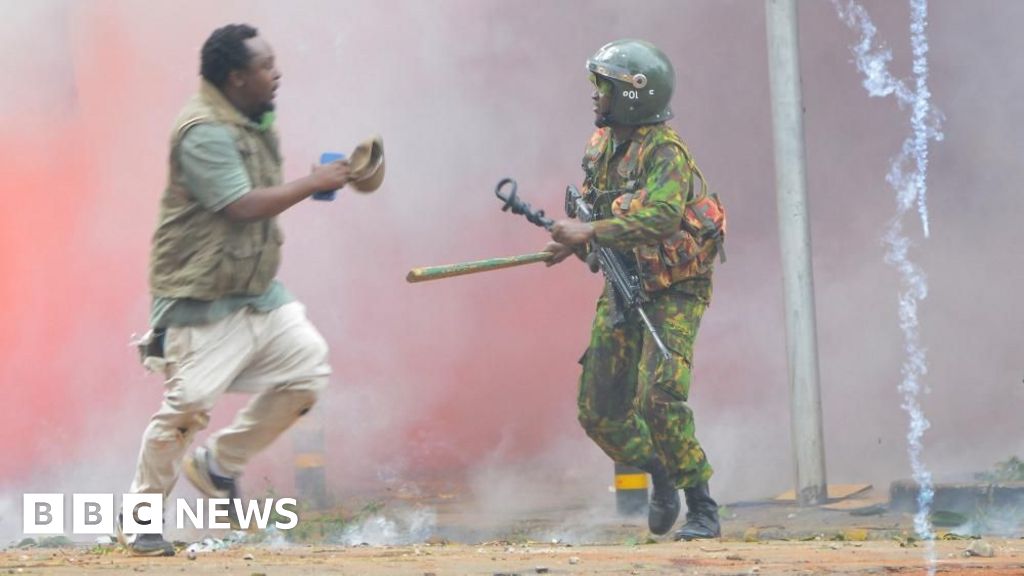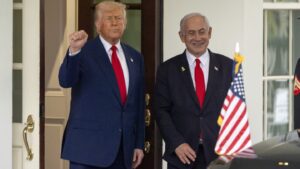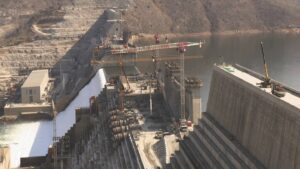
At least eight people have been killed and hundreds injured as protests erupted across Kenya against President William Ruto’s government. The demonstrations, which saw police firing tear gas and water cannons, took place exactly one year after a similar wave of anti-government protests shook the nation in 2024.
The government initially banned live TV and radio coverage of the protests, but this decree was overturned by the High Court in Nairobi. Many demonstrators chanted “Ruto must go” and waved branches, symbolizing peaceful opposition to his rule. Despite the peaceful intent, clashes with police broke out in the capital and other cities.
Protests and Government Response
Thousands of Kenyans took to the streets, with tensions reaching a peak as crowds attempted to march towards President Ruto’s official residence. The president, speaking at a burial ceremony in Kilifi, urged protesters to maintain peace and stability.
“Protests should not be to destroy peace in Kenya. We do not have another country to go to when things go wrong. It is our responsibility to keep our country safe,” President Ruto stated.
His absence from State House was notable as young protesters threatened to storm the premises. In response, police erected barricades and razor wire to block major roads leading to government buildings.
Casualties and Public Outcry
While the authorities have not released official casualty figures, a joint statement from the Kenya Medical Association, Law Society of Kenya, and the Police Reforms Working Group reported at least eight deaths. Among the 400 injured, 83 required specialized treatment, and eight suffered gunshot wounds. The injured also included three police officers.
Amnesty Kenya, a human rights group, suggested the death toll could be as high as 16. Amina Mude, a demonstrator, expressed her reasons for joining the protests, emphasizing concerns over the country’s direction.
“I feel like as a country we’re not going in the right direction, especially in education and everything happening. I feel like it’s high time that the country and the leadership listens to us,” Mude told the BBC.
Scenes from Nairobi
In Nairobi, video footage captured dramatic scenes of white tear gas drifting through the city, forcing protesters to scatter, cough, and shield their eyes. The heart of the city saw shuttered shops and empty streets as demonstrations unfolded.
The fence around parliament was adorned with wreaths and handwritten notes from grieving families and defiant youths, serving as a poignant reminder of last year’s unrest. A young woman draped in a Kenyan flag held a poster listing the names of those killed a year ago by security forces.
Historical Context and Future Implications
This latest wave of protests is reminiscent of the 2024 demonstrations, which also resulted in significant casualties and highlighted deep-seated frustrations with the government. The ongoing unrest underscores the challenges President Ruto faces in addressing public discontent and ensuring political stability.
As Kenya grapples with these issues, the international community watches closely. The protests have drawn attention to the broader socio-political dynamics in the region, raising questions about governance, civil liberties, and the role of security forces in maintaining order.
Moving forward, the Kenyan government may need to engage in dialogue with opposition groups and civil society to address the underlying grievances driving these protests. The situation remains fluid, with potential implications for the country’s political landscape and future governance.







